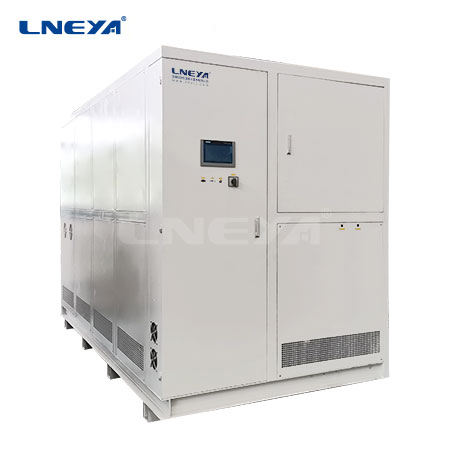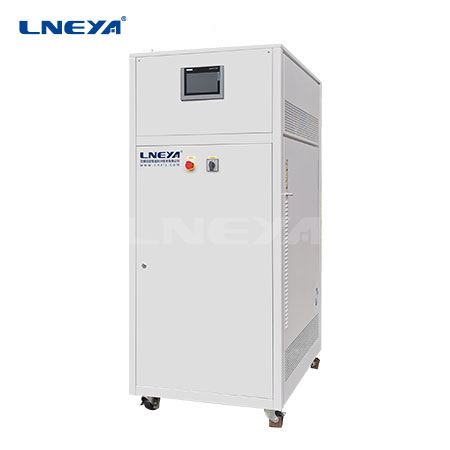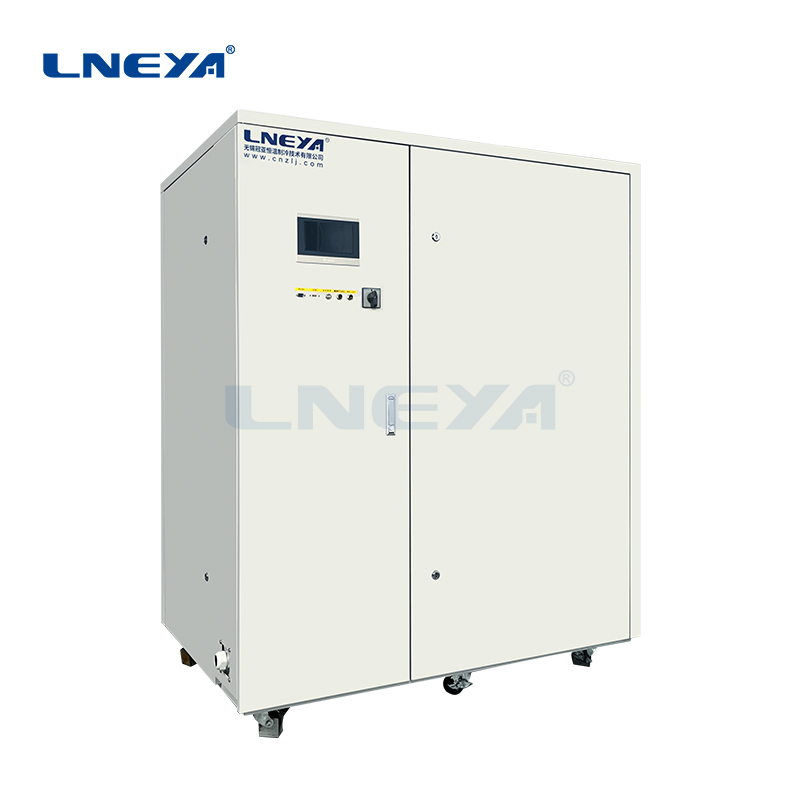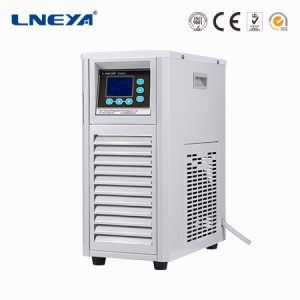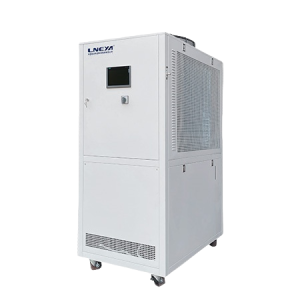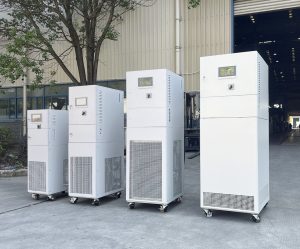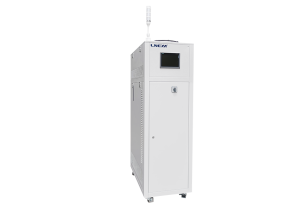Water Distiller Circulating Water Chiller
Water distillers generate a lot of heat during operation, especially when they need to run continuously or process a large amount of water. In order to ensure that the water distiller can operate stably and maintain efficient distillation efficiency, a circulating chiller is usually required.
Here is the relevant information about circulating cooling of water distillers and its importance: Working Principle of Water Distillers Water distillers prepare pure water by heating raw water, evaporating it into steam, and then condensing the steam back into liquid water. This process involves two key steps: heating and condensing, and the condensing step especially requires a chiller to remove heat.
Functions of circulating water chiller system:
- Condensing steam:
•The steam generated by the distilled water machine needs to be converted into liquid water through the condenser. The circulating chiller provides cooling water to condense the steam into liquid through the condenser.
•The cooling water circulates continuously, taking away the heat released during the condensation of the steam, ensuring the efficient condensation process.
- Improving efficiency:
•An efficient chiller can speed up the condensation of steam, thereby improving the overall working efficiency of the distilled water machine.
•By quickly removing heat, energy loss can be reduced and energy utilization efficiency can be improved.
- Protecting equipment:
•During the distillation process, key components such as heating elements and condensers generate a lot of heat.
•The circulating chiller can effectively remove this heat, prevent the equipment from overheating, and extend the service life of the equipment.
- Temperature control:
•Accurate temperature control is essential for the distillation process, and the circulating chiller can ensure that the temperature in the condenser remains within a suitable range.
•By controlling the temperature and flow of cooling water, fine adjustment of the condensation process can be achieved.
- Safety:
•The circulating cooling system can reduce the pressure inside the distilled water machine and reduce the risk of overheating or explosion.
•Through effective temperature control, safety hazards caused by excessive temperature can be avoided.
Maintenance and management:
- Water quality management:
•Regularly check the water quality of the cooling water to avoid the accumulation of impurities that affect the cooling effect.
•Use appropriate water treatment agents to prevent scale formation.
- Regular cleaning:
•Regularly clean the chiller, especially the condenser, to ensure its efficient operation.
•Cleaning can use special cleaning agents or physical methods.
- Inspection and replacement:
•Regularly check the sealing of the chiller and the integrity of the pipeline.
•If damage or wear is found, it should be replaced in time to avoid leakage or reduced cooling effect.
- Temperature monitoring:
•Use a temperature sensor to monitor the temperature of the cooling water to ensure that it is within the appropriate range.
•Through temperature monitoring, potential problems can be discovered and solved in time.
By equipping with an effective circulating chiller, the distilled water machine can maintain an efficient working state during continuous operation to ensure the stable quality of the distilled water produced. This is crucial for applications in many fields such as laboratories, pharmaceutical industry, and electronics industry.
Water ChillersLow &Room Temperature
- More
LTZ Inverter M Series
APPLICATIONS Suitable for application to the target temperature control object already has a cold storage tank and a circulating pump, and the medium is transported into the LTZ M series refrigeration temperature control unit through th…
- More
LN -60°C~ -10°C
适用范围 Product Features 产品参数 Product Parameter 行业应用 APPLICATION 航空航天材料|试验装置控温解决方案 在航空航天领域,材料的性能直接关系到飞行器的安全、可靠性和…
- More
LT -80℃~-20℃
It can guarantee 24-hour continuous operation Circulating refrigeration of ethylene glycol mixed with water mixture 1. Can use ethylene glycol mixed with water for circulating refrigeration, saving resources 2.Cir…
- More
- More
LTZ Variable Frequency M series
It is suitable for the target temperature control object that already has a cold storage tank and a circulating pump. The medium is transported to the LTZ M series refrigeration unit through the circulating pump, which is a closed-loop refri…
- More
LTG Screw Chiller Units
It is suitable for various production process cold sources in chemical, pharmaceutical, machinery and other fields, and can provide -110℃~30℃ refrigeration medium, which can be used as ice storage, low temperature air supply and ot…
- More
ZLTZ Efficient Heat Exchanger Series
The ZLTZ temperature control unit is combined with a microchannelreactor to form a high heat release temperature control application.Under the same f…
- More
LT-800 mini chiller
LNEYA mini chiller is a small water chiller use in laboratory for rotary evaporator.
loading…
已经是到最后一篇内容了!
Related recommendations
-
KRY -40℃~+100℃ (1to1)
4879Refrigeration, heating, temperature control, flow control Connect the tested object to a testing platform adapterThe components are cooled and heated internally through ethylene glycol aqueous solution for testing. ...
View details -
Chiller for heat deflection temperature instrument
1583Temperature range: The temperature of the cooling water is usually required to be between 6 ℃ and 18 ℃.Temperature difference requirement: The temperature difference of the cooling water should be controlled wit...
View details -
Where do you need explosion-proof water chillers?
1315Explosion-proof refrigeration unit water chillers (explosion-proof chillers) are mainly used in environments with explosion risks to ensure the safety and reliability of the cooling process. This type of equipment is specially designed to ...
View details -
KRY Series Cooling Heating Control Temp & Flow System
140APPLICATIONS The object under test is connected to a test platform adapter, and the component is cooled and heated by ethylene glycol water solution inside the component. The tested component needs to undergo a specific temperature chan...
View details
 LNEYA Industrial Chillers Manufacturer Supplier
LNEYA Industrial Chillers Manufacturer Supplier










